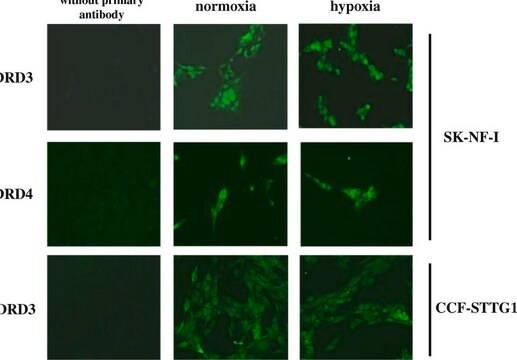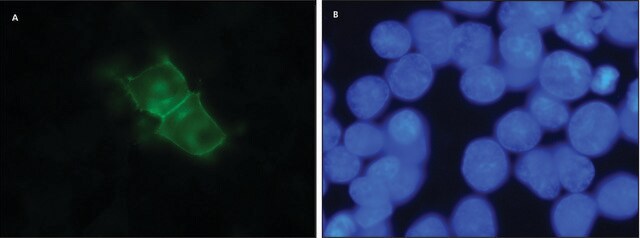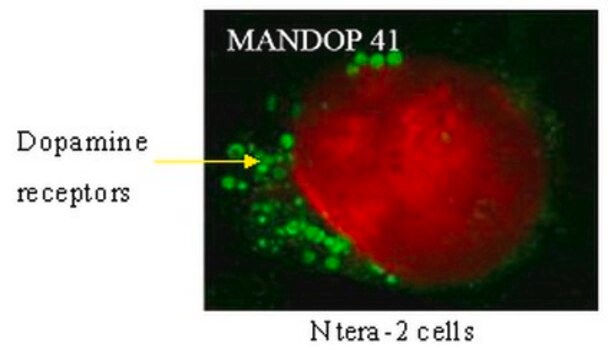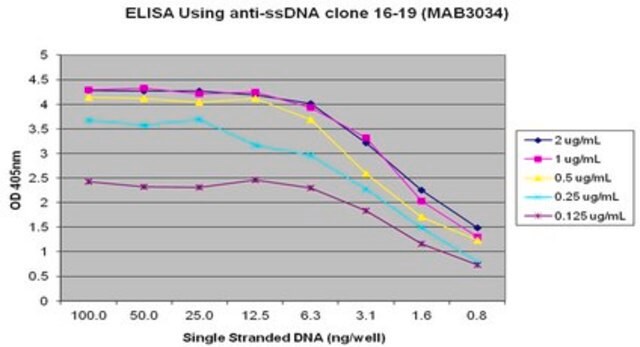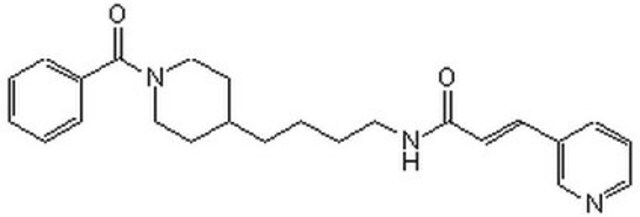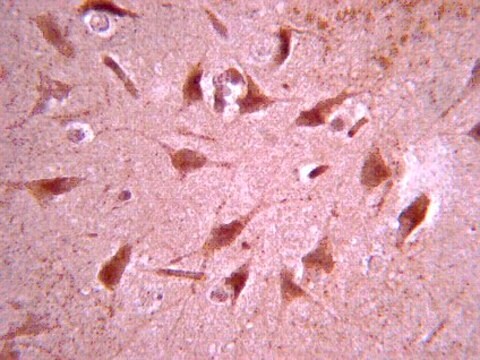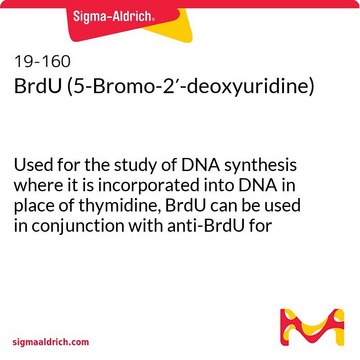AB1784P
Anti-Dopamine D1A Receptor Antibody, 4th Extracellular Domain
Chemicon®, from rabbit
About This Item
Prodotti consigliati
Origine biologica
rabbit
Livello qualitativo
Forma dell’anticorpo
affinity purified immunoglobulin
Tipo di anticorpo
primary antibodies
Clone
polyclonal
Purificato mediante
affinity chromatography
Reattività contro le specie
rat
Produttore/marchio commerciale
Chemicon®
tecniche
ELISA: suitable
immunohistochemistry: suitable
western blot: suitable
N° accesso NCBI
N° accesso UniProt
Condizioni di spedizione
dry ice
modifica post-traduzionali bersaglio
unmodified
Informazioni sul gene
human ... DRD1(1812)
Specificità
Immunogeno
Applicazioni
Western blot: 1-10 μg/mL (Chemiluminescence technique). An antibody made to this peptide has been shown to detect 2 proteins of 50 and 75 kDa in solubilized hippocampal membranes. The 75 kDa band was not visible in striatum (Huang, 1992; O′Connel, 1995). Approximately 100-400 μg of protein/lane should be loaded to visualize the 75 kDa band (Huang, 1992; O′Connel, 1995) that is present in relatively small amounts.
ELISA: 0.5-1.0 μg/mL using 1 μg/mL of control peptide per well.
The immunogen peptide is available (Cat. No. AG266) for use in ELISA or antibody blocking studies. AG266 is not recommended for use as a western blot positive control.
Optimal working dilutions must be determined by end user.
Neuroscience
Neurotransmitters & Receptors
Stato fisico
Stoccaggio e stabilità
Risultati analitici
POSITIVE CONTROL: rat striatal membranes (western blot)
Altre note
Note legali
Esclusione di responsabilità
Non trovi il prodotto giusto?
Prova il nostro Motore di ricerca dei prodotti.
Codice della classe di stoccaggio
10 - Combustible liquids
Classe di pericolosità dell'acqua (WGK)
WGK 2
Punto d’infiammabilità (°F)
Not applicable
Punto d’infiammabilità (°C)
Not applicable
Certificati d'analisi (COA)
Cerca il Certificati d'analisi (COA) digitando il numero di lotto/batch corrispondente. I numeri di lotto o di batch sono stampati sull'etichetta dei prodotti dopo la parola ‘Lotto’ o ‘Batch’.
Possiedi già questo prodotto?
I documenti relativi ai prodotti acquistati recentemente sono disponibili nell’Archivio dei documenti.
Il team dei nostri ricercatori vanta grande esperienza in tutte le aree della ricerca quali Life Science, scienza dei materiali, sintesi chimica, cromatografia, discipline analitiche, ecc..
Contatta l'Assistenza Tecnica.